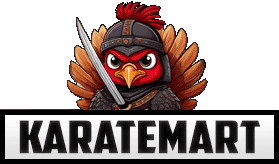Bo Staff Techniques for Beginners: How to Master Balance and Control
October 10th, 2025
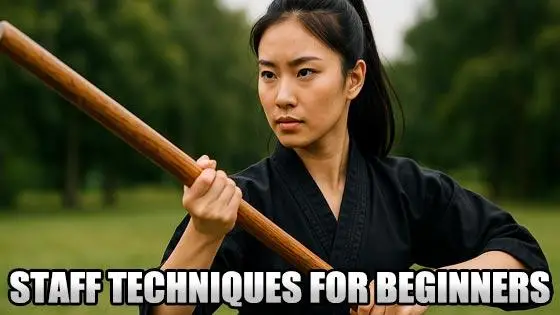
There's something almost hypnotic about the way a bo staff moves, spinning, striking, and flowing with precision in the hands of a skilled martial artist. But every expert starts somewhere, and learning bo staff techniques as a beginner is about developing balance, timing, and control long before mastering fancy spins. Whether you train in karate, kobudo, or simply enjoy martial arts as a fitness practice, the bo staff is one of the most rewarding weapons to learn. It teaches discipline, coordination, and awareness in every movement, and with the right form and practice, you'll quickly start to feel its rhythm and power.
1. Choosing the Right Bo Staff Material
Before learning your first bo staff techniques, it helps to understand that not all staffs are the same. The material you choose will affect how the weapon feels, moves, and performs during training. Beginners often start with something lightweight for better control, while experienced martial artists may prefer heavier options to build strength and precision.
Wooden Bo Staffs: Traditional and durable, wooden staffs are great for developing power and learning proper technique. They have a solid feel that helps build muscle memory for real-world striking drills.
Rattan Bo Staffs: Rattan is a lighter, slightly flexible material often used in Filipino martial arts. Because it bends a little under impact, it's ideal for spinning drills and faster, more fluid movements.
Metal Bo Staffs: Metal staffs are heavier and should be reserved for advanced practitioners who already have strong control. The extra weight builds endurance and precision but can be tiring for beginners.
Collapsible Bo Staffs: Collapsible models are perfect for travel and modern training environments. They can fold or collapse down for easy storage while maintaining enough strength for light practice and demonstrations. For many martial artists, collapsible bo staffs offer the best mix of portability and versatility.
If you're just getting started, a wooden or collapsible bo staff is usually the best choice. You'll get a good balance of weight, control, and safety while developing your technique. To explore different styles and materials, check out our full selection of bo staffs.
2. Learn the Basic Bo Staff Grip
Once you've chosen your staff, the next step is learning how to hold it correctly. A proper grip is the foundation of every bo staff technique. It gives you control over both speed and accuracy while keeping your movements fluid and balanced.
Start by finding the exact center of your bo staff. This is your balance point and it should rest comfortably between your hands. Place your hands about shoulder-width apart, palms facing downward, with thumbs pointing along the staff instead of wrapping over it. This grip allows for quick transitions between strikes, spins, and blocks without losing control.
When practicing spins or strikes, keep your hands relaxed. A tight grip will make your movements jerky and limit your control. Think of holding the staff firmly enough that it doesn't slip, but lightly enough that it can roll smoothly across your palms when you transition between moves.
For beginners, it's helpful to mark the center of your staff with a small piece of tape. This simple trick ensures that your grip stays even and helps you develop muscle memory for perfect balance.
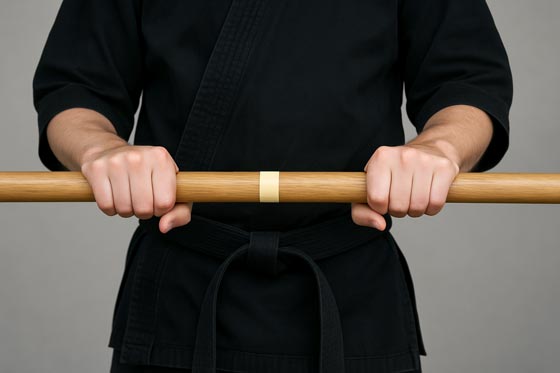
3. Master the Front Stance
Every great bo staff technique starts with a solid stance. The front stance, or zenkutsu-dachi in traditional Japanese martial arts, gives you balance, reach, and stability during strikes and spins. Without it, even the best handwork will feel unsteady.
Begin by stepping one foot forward and keeping your back leg straight with the heel planted on the ground. Your front knee should bend just enough that it's directly above your ankle, not pushed too far forward. Distribute your weight evenly between both legs and make sure your feet are shoulder-width apart for better balance.
Keep your shoulders relaxed and your back upright. The bo staff should feel like an extension of your body, not something you're forcing into position. When striking or blocking, move your hips with your staff to create a smoother, more powerful motion. This connection between stance and weapon control is what turns basic movements into clean, controlled techniques.
For beginners, it helps to practice this stance without swinging the staff. Simply hold your bo staff horizontally in front of you, focus on balance and posture, and get used to shifting your weight smoothly from front to back. Once your stance feels solid, your strikes will naturally follow with better strength and accuracy.
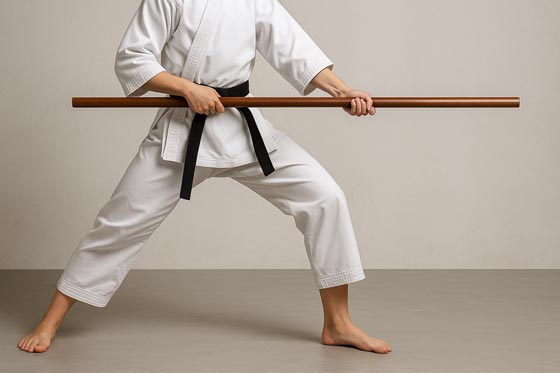
4. Basic Bo Staff Strikes
Once your grip and stance feel comfortable, it's time to start practicing the most fundamental bo staff strikes. These basic techniques build strength, coordination, and accuracy while helping you understand how to control both ends of the weapon. Focus on form and balance rather than speed at first.
Downward Strike:
Start in your front stance with the bo staff held horizontally in front of you. Lift the rear end of the staff above your head, then bring it down in a smooth, controlled motion as if splitting the air in front of you. This strike teaches precision and timing while training your shoulders and core for power.
Horizontal Strike:
Hold the staff parallel to the ground at chest height. Rotate your hips as you swing from one side to the other, keeping your arms extended but not locked. The goal is to let your body drive the motion, not just your arms. This technique is excellent for developing rotational control and follow-through.
Thrust Strike:
From your front stance, point one end of the staff forward and push your back hand to extend the strike. The thrust is fast and direct, targeting the opponent's midsection or chest area. Always pull the staff back to your centerline after the strike to stay ready for the next move.
As you repeat these drills, think about moving from your center, not just your hands. Smooth transitions and balanced body mechanics are what separate sloppy movements from clean, controlled techniques. Over time, these fundamental strikes will become second nature and form the base for more advanced combinations.
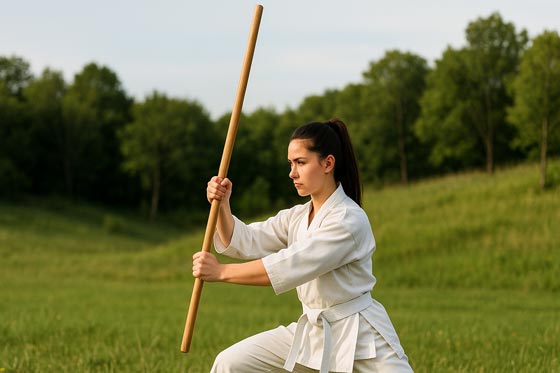
5. Beginner Bo Staff Spins
Once you're comfortable with your grip and basic strikes, you can start working on bo staff spins. Spins are not only visually impressive, but they also help you develop coordination, timing, and control. The key is to stay relaxed and move from your wrists and shoulders, not your elbows.
The Figure-Eight Spin:
Hold the staff in front of your body with your lead hand slightly above the center. Use your wrist to draw a sideways figure-eight motion, letting the staff flow across your front and diagonally back to the other side. Keep your movements smooth and controlled rather than fast. This spin builds rhythm and teaches how to redirect momentum safely.
The Side Spin:
For this variation, hold the bo staff at your side and let the front end drop down, sweeping in a circular motion parallel to the ground. Rotate your wrist as the staff comes up, allowing it to flow back around. The goal is to make the motion fluid enough that it looks like the staff is spinning on its own.
Behind-the-Back Transfer:
As you become more comfortable, you can add a behind-the-back hand transfer. This drill trains ambidexterity and teaches how to recover from transitions during fast movements. Move slowly at first and focus on maintaining your balance while the staff rolls naturally across your back hand into your lead hand.
Remember, speed will come later. For now, focus on keeping your movements clean and consistent. Every spin you master will improve your reaction time and flow, making your overall bo staff control far smoother and more confident.
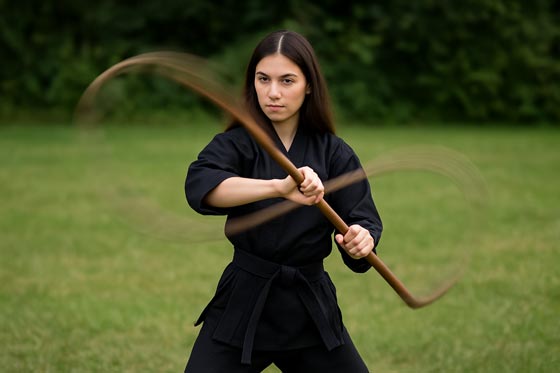
6. Practice Safety and Control
Bo staff training can be incredibly rewarding, but safety should always come first. Even a lightweight staff can cause injury if used carelessly or in a small space. Before you begin any spinning or striking drills, make sure you have at least six feet of clearance in every direction. Avoid practicing near walls, furniture, or people until you're confident in your control.
If you're training indoors or just getting started, consider using a foam or padded practice weapon. These allow you to build skill and confidence without the risk of hurting yourself or damaging your surroundings. Once you've mastered control, you can transition to wood or metal for a more realistic feel.
Keep your grip relaxed, your stance stable, and your focus forward. Try to move slowly and deliberately at first, repeating each technique until it feels natural. A calm, focused mindset is just as important as physical form when learning martial arts weapons. With time and consistent effort, control will become second nature.
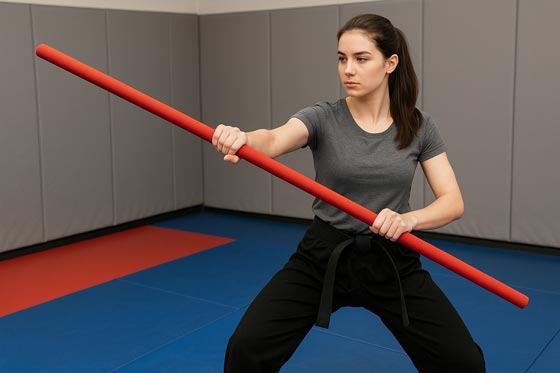
When you first pick up a bo staff, it might feel awkward or even intimidating, but every martial artist starts right where you are now. The key is consistency. Practice a little each day, focus on clean form, and don't rush through techniques. Over time, the bo staff will begin to feel like a natural extension of your body, responding smoothly to each movement. Whether you're training for martial arts classes, demonstrations, or just personal development, it's one of the best weapons for improving focus, coordination, and confidence. If you're ready to upgrade your gear or explore different styles, check out our full selection of bo staffs to find the right fit for your training goals.
You May Also Be Interested In:
- The Mental Game: Master Your Training Time
- EDC Knives for Beginners: How to Choose Your First Everyday Carry Blade
- How Do You Do the Splits? A Safe, Step-by-Step Guide for Beginners
- Metal Bo Staff 2.0 - The Next Stage of Staff Evolution
- Collapsible Bo Staff 2.0: The Next Generation of Staff
- What's the Right Wooden Bo Staff for You?
- How to Make a Metal Bo Staff
- New 2-Piece Collapsible Bo Staff
- What is the Best Bo Staff for Martial Arts?
- New High-Impact LED Bo Staff
Leave a Reply

